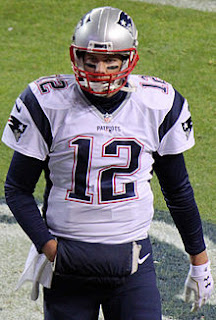Linking in the US: is an embedded tweet an infringement of the public display right?
 |
| Tom Brady |
One would not be surprised if a question of this kind was asked in Europe [it was actually asked but answered very ambiguously in BestWater, here, whose conclusions appear now questionable in light of subsequent case law, notably GS Media, here].
On this side of the Atlantic linking can fall within the scope of the right of communication to the public within Article 3(1) of the InfoSoc Directive, although different considerations must be undertaken depending on the case at issue, including whether the link provider is aware of the unlicensed character of the content linked to and/or pursues a profit.
On this side of the Atlantic linking can fall within the scope of the right of communication to the public within Article 3(1) of the InfoSoc Directive, although different considerations must be undertaken depending on the case at issue, including whether the link provider is aware of the unlicensed character of the content linked to and/or pursues a profit.
This very question is now being asked alsoin the US, where a photographer working with Getty Images [this had already raised issues of linking and copyright under US law, eg here], Justin Goldman, has sued a number of publishers over the unauthorised embedding, by their relevant publications, of a tweet containing an unlicensed image of American football quarterback Tom Brady that he had taken.
According to the complaint filed with the US District Court for the Southern District of New York, the plaintiff alleges that the defendants - by embedding content hosted elsewhere (Twitter) - have infringed his public display right under §106(5) of the US Copyright Act. According to this provision, the copyright owner has the right, "in the case of literary, musical, dramatic, and choreographic works, pantomimes, and pictorial, graphic, or sculptural works, including the individual images of a motion picture or other audiovisual work, to display the copyrighted work publicly".
It should be recalled that the US, despite being a party to both WIPO Internet Treaties, does not expressly recognise a making available right or a right of communication to the public, as instead the EU and its Member States do.
 |
| Not Tom Brady |
However, in the past US courts have had the opportunity to address to some extent linking issues. The best-known and possibly most relevant decision is the one of the Ninth Circuit in Perfect 10 v Amazon.com, which discusses the potential liability for the the displaying of low-resolution thumbnails in response to Google Search queries. In that case the court considered that, although there was a prima facie infringement of the plaintiff's rights, the public display right requires that the work or a copy thereof is actually displayed. That would not be the case of someone that merely displays copies hosted on servers other than its own. The Ninth Circuit concluded that “[p]roviding ... HTML instructions is not equivalent to showing a copy.”
As explained in the Making Available Study published by the US Copyright Office, the "Ninth Circuit’s reasoning in Perfect 10 has been relied on to bar direct infringement claims for instances of inline linking and framing" (p 49).
This, however, has not happened without criticisms, especially by (1) those who think that the US position as interpreted in Perfect 10 would be inconsistent with this country's international obligations; and (2) by those who argue that the technological issues at stake in Perfect 10 would be different from those relevant to the embedding on one's own site of content hosted elsewhere.
According to the US Copyright Office the treatment of linking under US law remains uncertain and further guidance from courts is required. Is this new case perhaps the right opportunity?
After the filing of the complaint by Mr Goldman, a number of amicus curiae briefs have been filed: they are available here.
Further developments will be closely monitored: watch this space!
Further developments will be closely monitored: watch this space!
[Originally published on The IPKat on 3 November 2017]



Comments
Post a Comment